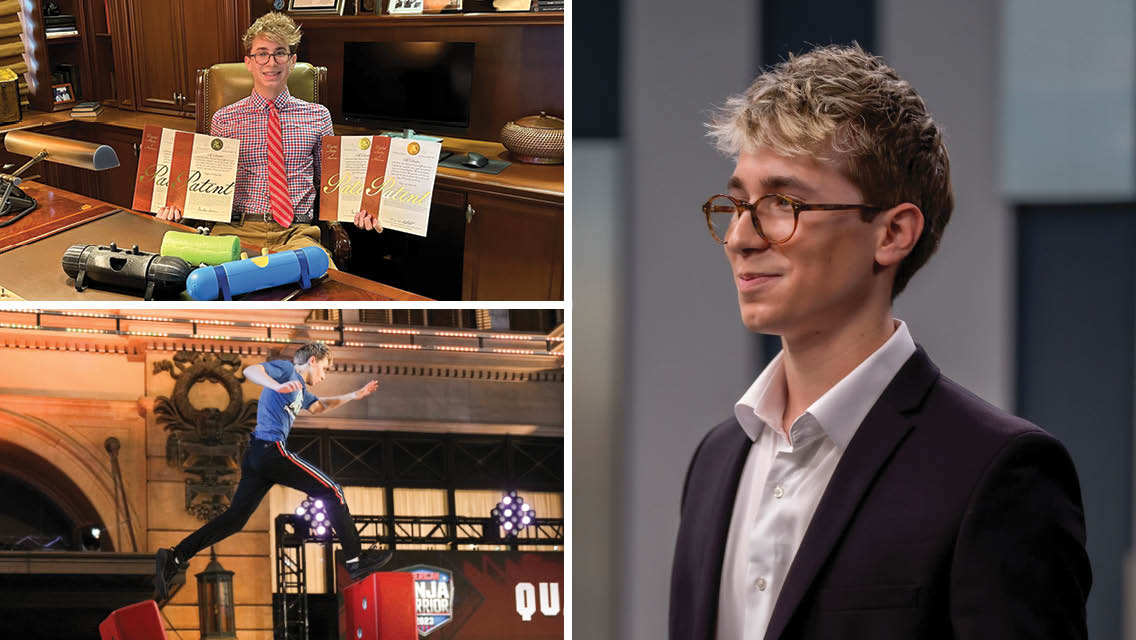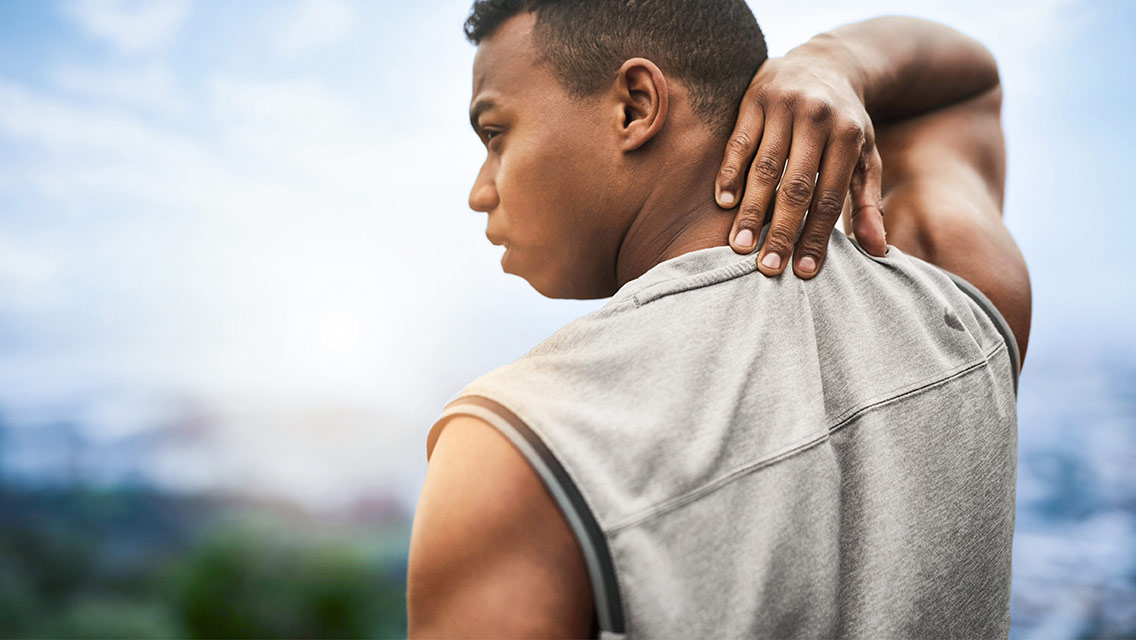By the time I applied to compete on NBC’s American Ninja Warrior (ANW) in 2022, I’d faced health problems nearly my entire life. I’d dreamed of being on the show since I started watching it at 8 years old, but for a long time, no one could have believed I’d be able to realize this dream.
Significant health challenges prevented me from physically maturing and participating at school and in sports. Yet when I was 13, I discovered a simple treatment method that allowed me to break away from nearly constant pain and step into my strength.
It changed the course of my life.
Seeing the Future
When I was 2 years old, doctors discovered I was legally blind in my left eye and at risk of retinal detachment. For the next eight years, I wore a patch over my right eye for four hours every day to force the weak eye to see. While remarkably effective — I now have 20/40 corrected vision — I spent those hours in almost complete blindness.
That was just the beginning of my health issues. Shortly after starting kindergarten, I began experiencing severe migraine attacks. Each one caused excruciating pain in my temples, and I would vomit dozens of times. I visited doctors all over the country, but the medications they prescribed were usually ineffective and came with nasty side effects.
Because my symptoms kept me mostly at home, I wasn’t developing in all the ways a “normal” kid would. I didn’t have many chances to connect or build friendships with kids my age. I also couldn’t commit to playing team sports because I’d have to miss too many games and practices.
So I became obsessed with ANW. When I felt well, I’d construct and navigate mini obstacle courses with my brother. On bad days, I’d try to watch the show from bed, gaining inspiration from the athletes conquering obstacles on and off the course.
Finding Relief
In fifth grade, my migraine attacks were so frequent and severe that I missed the last 55 days of school and had to be homeschooled the following year.
Medications made me feel awful, so I tried alternatives. I used ice packs, heat packs, and various types of pillows. I tried reforming my diet, avoiding artificial sweeteners, MSG, and red dye. Nothing seemed to work.
When I was 13, my parents took me to a chiropractor, who explained how tension in the suboccipital muscles at the base of the skull often cause tension-induced headaches. He suggested my mom use her thumbs to apply pressure to these muscles the next time I felt symptoms. At the next sign of a headache, my mom did as he instructed — and I felt relief almost instantly!
Because my mom couldn’t always be with me, I wanted to be able to do this for myself. I searched online for a self-serve trigger-point-release product but found nothing. So I decided to make my own.
For my first prototype, I attached two bicycle kickstands to a piece of metal and used the contraption to massage the muscles on my head and neck. It didn’t really work, so I tried again, using a pool noodle as a base for neck support.
This model combined gravity and the weight of my head to put pressure on my suboccipital muscles. I used it at the onset of a migraine attack and felt immediate relief. When I started using it daily for prevention, the frequency and intensity of the attacks dropped dramatically.
Finding relief for myself was incredible, but I quickly turned to the possibility of helping others. In a couple of months, I found a designer to help advance my prototype. Within a few years, I’d developed more than 100 prototypes, acquired four U.S. patents, and come up with a name: Releevum.
I’ve always had high aspirations, but with my health issues, I’d sometimes worry that I’d never be successful. The obstacles seemed insurmountable. But developing this product allowed me to pour my pent-up ambition into a project, and I finally felt like I could shape my future rather than be stymied by my health.
Upward Swing
I was 14 when I returned to in-person schooling in 2018. I was only 4 feet, 11 inches tall and weighed 75 pounds. I wasn’t athletic. But later that fall, a ninja warrior training gym opened near my home in Boca Raton, Fla. I started attending open gym sessions, where I could practice obstacle courses on my own.
I was terrible, but I loved the variety of obstacles and how people cheered for each other. With my ANW dream in mind, I kept going back.
The next spring, I competed in recreational leagues. I placed last in my first few competitions, but I progressed rapidly. By the following year, I was ready for more.
I pursued my school PE requirement through an independent study at the ninja warrior gym, and I started strength training with a friend. He showed me his lifting routine and shared his nutrition strategy. I began eating more whole foods, largely abstained from sugar, and ratcheted up my protein intake.
By my senior year of high school, I’d shot up to 5 feet, 9 inches, and I weighed nearly double what I had four years prior. I’d also developed from a social outlier into my school’s student-body president and obtained admittance to Yale University. I was thrilled by my progress, but I wasn’t going to stop there.
Dream Come True
At the start of my freshman year of college, I applied to be on ANW. I was one of some 250 athletes — out of more than 100,000 applicants — selected to participate.
I flew to Hollywood the following spring for taping. The experience was brief: I fell during qualifying rounds. Although I was grateful for the opportunity, part of me felt like I’d ruined my one chance at living my dream.
Within 30 minutes of landing back in my hometown, I received a phone call. For the first time in its history, the show was filming two seasons at roughly the same time, and the producers wanted to offer me a second chance.
This time, I meant business. More determined than ever, I made it to the second-to-last obstacle. Even though I couldn’t complete the course, I went far enough to advance to the semifinals. There, I raced against one of my childhood heroes, Joe “The Weatherman” Moravsky.
He beat me, but I left Hollywood enriched by the opportunity and honored to compete on the show that had inspired me in my darkest days. It was a full-circle moment — the best experience of my life.
I’m hopeful that I can go back and compete again soon.
Future Goals
These days, I strive to do something physical each day. I also try to stay curious, maintain a positive attitude, and grow in my spirituality. I’m still attending Yale, majoring in economics and minoring in data science.
In addition to my personal pursuits, I always make sure to join friends for lunch or dinner. Having spent most of my childhood at home, I’m blessed to surround myself with inspiring people and engage in deep conversations.
When I graduate in 2026, I plan to work in management consulting and continue my pursuits with Releevum. I received a $10,000 prize from Entrepreneur Elevator Pitch in November 2023, and I’m excited to release Releevum into the world.
I created a solution for my own problem years ago when I made my first successful prototype, but there’s a long way to go. Millions of people with migraine continue to suffer, and I can’t wait to make a difference in their lives too.
David’s Top 3 Takeaways
1) Obstacles are inevitable in both ninja and life. “Success is determined by how you handle them,” David says.
2) Dream big. Never let the fear of failure stop you from trying, he advises. We can accomplish a lot more than we think when we commit to making progress.
3) Life is a team sport. “True success can’t be achieved alone,” David notes. “Surround yourself with others who encourage you to drive for greatness.”
My Turnaround
For more real-life success stories of people who have embraced healthy behaviors and changed their lives, visit our My Turnaround department.
This article originally appeared as “Rising to the Challenge” in the September/October 2025 issue of Experience Life.





This Post Has 0 Comments